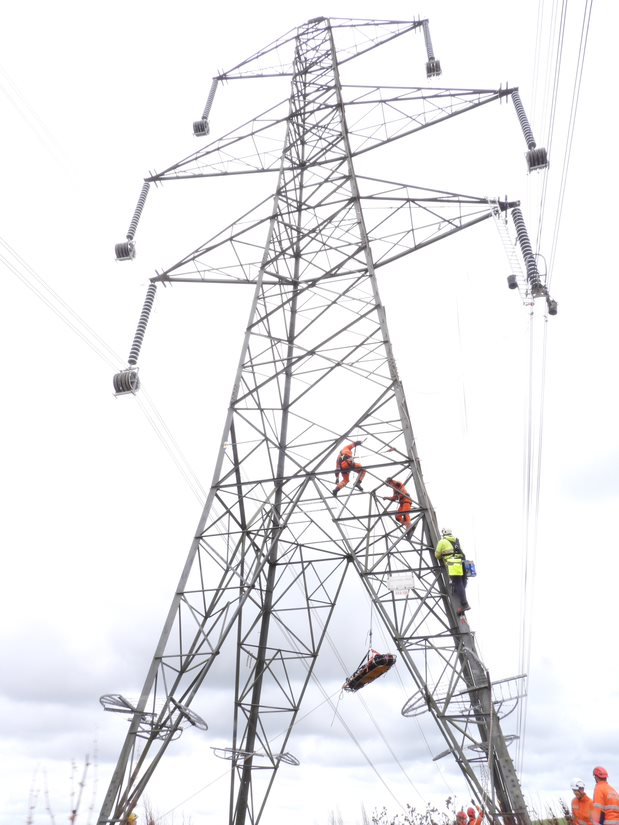Collaboration and teamwork were in evidence once again as National Grid and Morgan Sindall Infrastructure worked with Dorset & Wiltshire Fire and Rescue to create a unique opportunity to perform rescue drills on the National Grid Dorset Visual Impact Provision (VIP) site.
On Friday 30 September, the Fire and Rescue team practiced a variety of rescue operations on an unelectrified pylon, on the downland above Winterbourne Abbas, prior to its removal as one of 22 being taken down as part of the Dorset VIP project.
Transmission pylons are usually live meaning that opportunities to perform rescue drills on them are incredibly rare. This unusual exercise allowed the team to experience carrying out rescue operations at height on a 400kV electricity pylon for the first time.
Following an induction and overhead line briefing on casualty call out scenarios from Elliot Moor, Construction Manager for Morgan Sindall Infrastructure, the Fire and Rescue team simulated two scenarios in real inclement weather rescue conditions.
All rescue drills were risk assessed and managed closely to ensure everyone’s safety. They included a stretcher for a team member playing an incapacitated casualty, as pictured.
"Chances to carry out rescue drills like this on 45m high pylons are rare for the local Fire and Rescue teams but they give the crews training that could be vital in an emergency so we were delighted to help."
Paul Hamnett, Senior Project Manager for National Grid, said: “This project aims to enhance the Dorset Area of Outstanding Natural Beauty, and we’re doing that not just through removing 22 pylons, but also by offering opportunities that deliver additional benefits for the local community. Chances to carry out rescue drills like this on 45m high pylons are rare for the local Fire and Rescue teams but they give the crews training that could be vital in an emergency, so we were delighted to help.”
John Wickham, Dorset and Wiltshire Fire and Rescue added: “The technical climbing and procedural knowledge input by Elliot and the rest of the team was invaluable. We’ve found the sessions to be so useful that we’re organising another one later in the month and before all 22 pylons come down so that more of the Fire and Rescue team can benefit from this opportunity.”
Elliot Moor said: “My father was part of the team who first erected these pylons 50 years ago and it is great to play my part in the evolving legacy of the landscape. Being able to help the Fire and Rescue Service as we go about our work is an additional bonus and we very much enjoyed working with the local team.”
Pylon 4YA 198 above Winterbourne Abbas was used as the site for the rescue drills and is part of an 9km section of overhead transmission line in the Dorset Area of Outstanding Natural Beauty (AONB) set to be removed. The overhead line has been replaced with electric power cables buried underground which are already in operation.
The scheme aims to enhance the landscape near the villages of Friar Waddon, Martinstown and Winterbourne Abbas, as part of National Grid’s Visual Impact Provision project to reduce the visual impact of existing high voltage power lines in protected areas across England and Wales.

